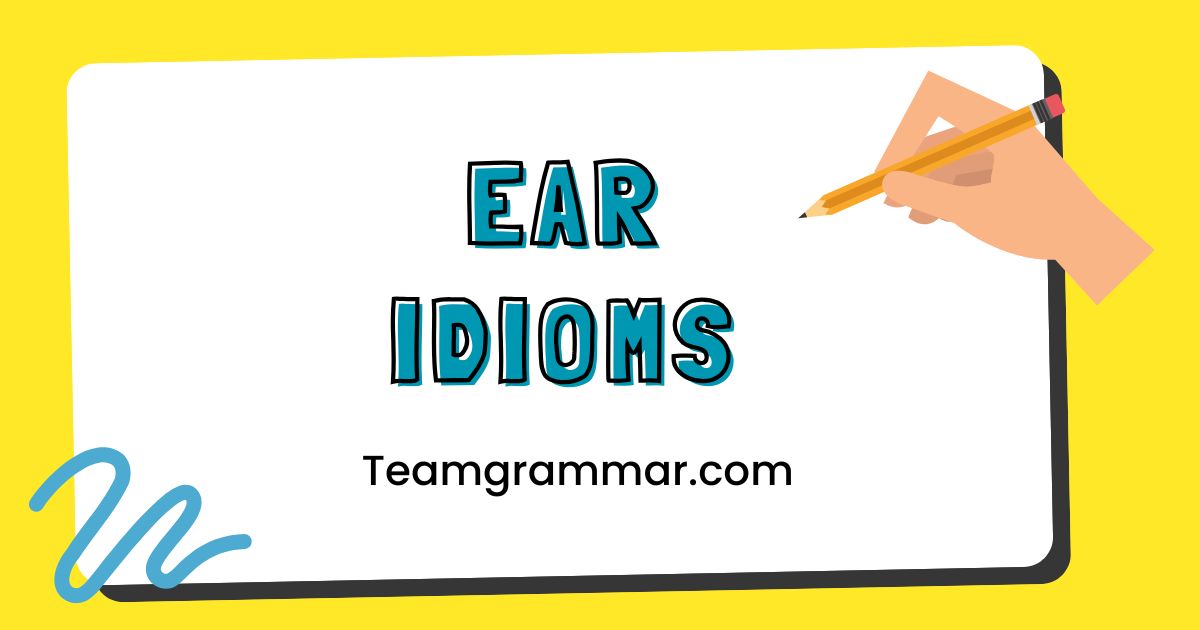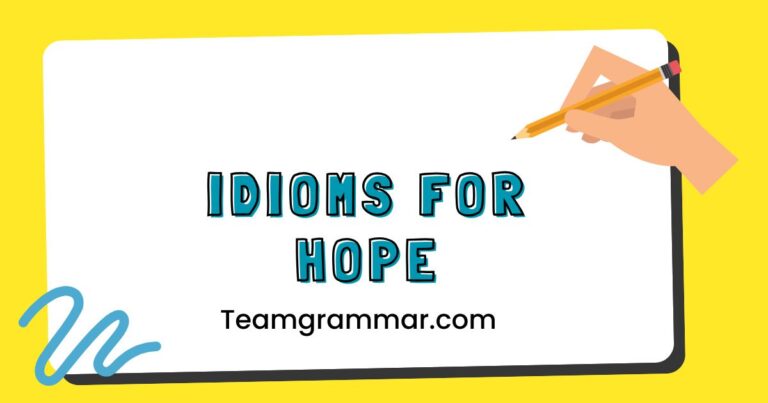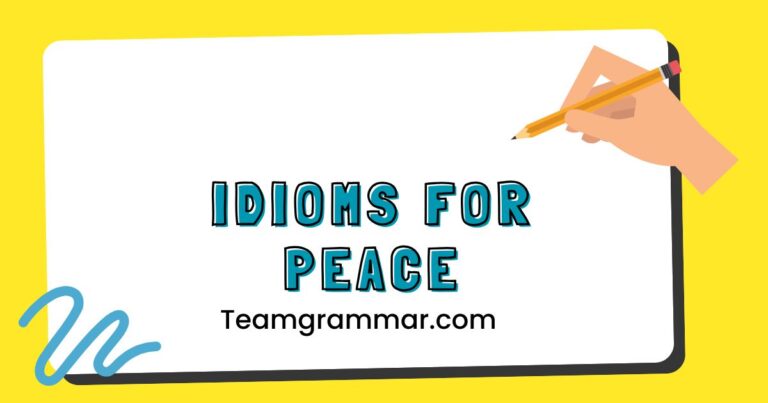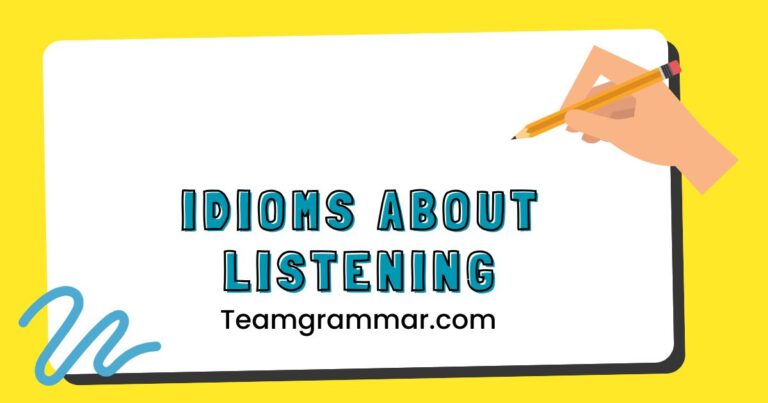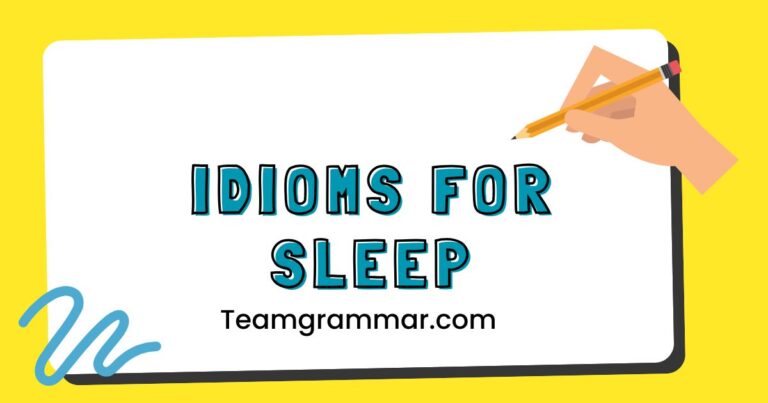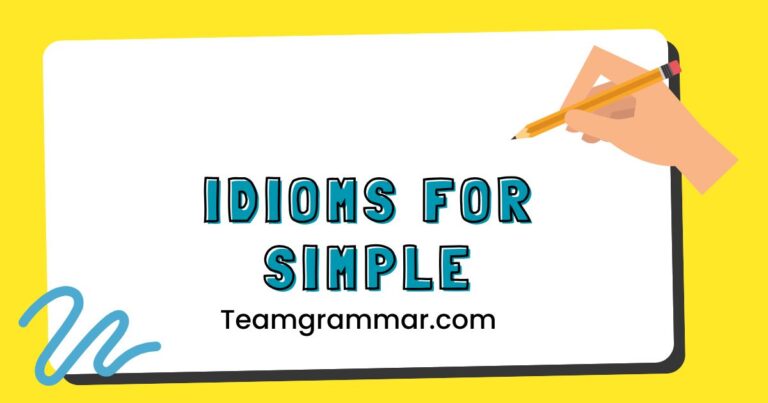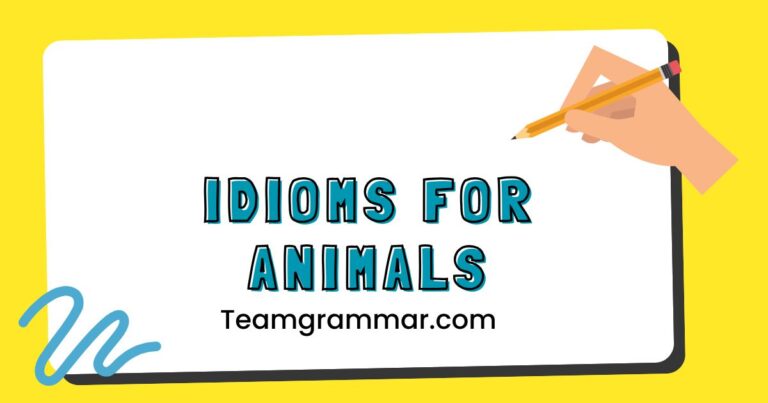45+ Ear Idioms: Mastering Common English Expressions
Understanding idioms is crucial for mastering English, as they add color and nuance to everyday conversations. Idioms related to “ears” are particularly common and can significantly enhance your comprehension and fluency. This article provides a comprehensive guide to ear idioms, exploring their meanings, origins, and usage.
Whether you’re an ESL student, a language enthusiast, or simply looking to improve your English skills, this guide will equip you with the knowledge and confidence to use ear idioms effectively. By delving into the intricacies of these expressions, you’ll gain a deeper appreciation for the richness and complexity of the English language.
Table of Contents
- Introduction
- Definition of Idioms
- Structural Breakdown
- Types and Categories of Ear Idioms
- Examples of Ear Idioms
- Usage Rules
- Common Mistakes
- Practice Exercises
- Advanced Topics
- FAQ
- Conclusion
Definition of Idioms
An idiom is a phrase or expression whose meaning cannot be understood from the literal meanings of its individual words. Instead, an idiom has a figurative meaning that is known through common use. Idioms are a vital part of any language, adding depth and color to communication. They reflect cultural nuances and historical contexts, making language learning both challenging and rewarding. Understanding idioms is crucial for effective communication, as misinterpreting them can lead to confusion or misunderstanding.
In the context of English grammar, idioms function as fixed expressions. This means the words within an idiom cannot be changed without altering its meaning or making it nonsensical. Idioms related to “ears” are particularly illustrative, as they often convey ideas about listening, understanding, and responding to information. These idioms can be classified based on their function, such as expressing attentiveness, indifference, or skill.
Structural Breakdown
Ear idioms, like all idioms, have a fixed structure. The words in the phrase must remain in a specific order to retain the intended meaning. Changing the word order or substituting words can render the idiom meaningless or alter its connotation entirely. This rigidity is a defining characteristic of idioms and distinguishes them from regular phrases. The structure of ear idioms often includes verbs related to hearing or perception, combined with nouns or adjectives that modify the meaning. For instance, “lend an ear” combines the verb “lend” with the noun “ear” to create a figurative meaning of listening attentively. The preposition “to” is often used after these idioms when specifying who or what is being listened to.
The grammatical structure of ear idioms can vary. Some idioms are verb phrases, while others function as adjectives or adverbs. Regardless of their grammatical role, the meaning remains non-literal and must be learned as a unit. Analyzing the structure of an idiom can sometimes provide clues to its meaning, but ultimately, familiarity and context are essential for accurate interpretation. Some idioms might seem logical once their meaning is known, while others appear entirely arbitrary.
Types and Categories of Ear Idioms
Ear idioms can be categorized based on the specific meaning they convey. These categories can overlap, but provide a useful framework for understanding the range of expressions. Here are some common categories:
Attentiveness
These idioms describe the act of listening carefully or paying attention to someone or something. They often imply a willingness to understand and respond to the speaker’s message. Examples include “lend an ear” and “all ears.”
Indifference
These idioms express a lack of interest or a refusal to listen to someone. They suggest that the speaker’s words are being ignored or disregarded. Examples include “fall on deaf ears” and “turn a deaf ear.”
Skill or Ability
These idioms relate to a person’s aptitude for hearing or understanding certain things, such as music or languages. They often imply a natural talent or learned skill. An example is “have a good ear.”
Inexperience
These idioms suggest a lack of experience or naivety. They often imply that the person is new to a situation and may not fully understand the complexities involved. An example is “wet behind the ears.”
Improvisation
These idioms focus on adapting to situations as they unfold, without a predetermined plan. “Play it by ear” falls into this category, suggesting flexibility and responsiveness.
Examples of Ear Idioms
The following sections provide detailed examples of common ear idioms, illustrating their meanings and usage in context. Each idiom is accompanied by multiple examples to enhance understanding and retention.
Lend an Ear
Definition: To listen attentively and sympathetically to someone. This idiom implies a willingness to offer support and understanding.
The following table provides examples of how to use “lend an ear” in different contexts.
| Example Sentence | Context |
|---|---|
| “I really need someone to lend an ear while I talk about my problems.” | Seeking emotional support |
| “If you’re having trouble with the project, I’m happy to lend an ear.” | Offering assistance |
| “She always lends an ear to her friends when they’re going through a tough time.” | Describing someone’s supportive nature |
| “Can you lend an ear to my presentation practice? I value your feedback.” | Requesting feedback on a presentation |
| “My boss is always willing to lend an ear to any employee concerns.” | Describing a supportive work environment |
| “He lent an ear as I explained the complicated situation.” | Narrating a conversation |
| “I appreciate you lending an ear; it really helped me sort things out.” | Expressing gratitude |
| “Sometimes, all you need is someone to lend an ear and not offer advice.” | Highlighting the importance of listening |
| “The therapist’s job is to lend an ear to patients and provide guidance.” | Describing a professional role |
| “Lend an ear to the new intern; they might have valuable insights.” | Encouraging inclusivity |
| “I wish my parents would lend an ear to my career aspirations instead of dismissing them outright.” | Expressing frustration about not being heard |
| “The community meeting is a chance for residents to lend an ear to the city council’s plans.” | Encouraging community engagement |
| “Before making a decision, I always lend an ear to all the different perspectives.” | Emphasizing the importance of considering different opinions |
| “The support group is a safe space where everyone can lend an ear and share their experiences.” | Describing a supportive environment |
| “It’s important to lend an ear to the needs of the less fortunate in our society.” | Highlighting social responsibility |
| “During times of crisis, it’s crucial to lend an ear to those who are suffering and offer support.” | Emphasizing empathy and compassion |
| “Great leaders are those who lend an ear to their team members and understand their concerns.” | Describing effective leadership |
| “A good friend is someone who will lend an ear without judgment and offer encouragement.” | Defining the qualities of a good friend |
| “The teacher encouraged the students to lend an ear to each other’s presentations and provide constructive criticism.” | Promoting peer learning |
| “Before jumping to conclusions, it’s always wise to lend an ear to both sides of the story.” | Encouraging impartiality |
| “The manager made it a point to lend an ear to the grievances of his staff.” | Describing a manager addressing employee concerns |
| “The author hoped that readers would lend an ear to the stories of marginalized communities.” | Highlighting the importance of understanding diverse perspectives |
| “The politician promised to lend an ear to the concerns of the voters.” | Describing a politician’s commitment to listening to constituents |
| “The doctor always lends an ear to her patients before making a diagnosis.” | Emphasizing the importance of patient care |
| “The mentor encouraged the mentee to lend an ear to the advice of experienced professionals.” | Promoting learning from others |
| “It’s important to lend an ear to the warning signs of burnout to prevent further health issues.” | Highlighting the importance of self-care |
| “The journalist lent an ear to the stories of the refugees and shared their experiences with the world.” | Describing the role of journalism in amplifying marginalized voices |
All Ears
Definition: To be fully attentive and eager to listen. This idiom indicates a strong interest in what someone has to say.
The following table provides examples of how to use “all ears” in different contexts.
| Example Sentence | Context |
|---|---|
| “Tell me about your trip – I’m all ears!” | Expressing excitement to hear a story |
| “Okay, I’m all ears. What did the doctor say?” | Showing eagerness to hear news |
| “The children were all ears when their grandfather started telling a story.” | Describing children’s attentiveness |
| “Now that the presentation is about to begin, we are all ears.” | Signaling readiness to listen |
| “The team was all ears as the coach revealed the new strategy.” | Describing a team’s focus and attention |
| “I’m all ears, so tell me everything that happened last night.” | Expressing curiosity |
| “The students were all ears when the guest speaker started talking about their career.” | Describing students’ interest in career advice |
| “When it comes to gossip, she’s always all ears.” | Humorously describing someone’s interest in gossip |
| “The CEO announced the company’s new direction, and everyone was all ears.” | Describing attentiveness during an important announcement |
| “I’m all ears, so feel free to share any ideas you have for improving the project.” | Encouraging participation |
| “The detective was all ears as the witness recounted the events of the crime.” | Describing a detective’s attention to detail |
| “The audience was all ears as the poet recited their verses.” | Describing the captivated attention of an audience |
| “The intern was all ears as the senior engineer explained the intricacies of the system.” | Describing an intern’s eagerness to learn |
| “The investor was all ears as the entrepreneur pitched their innovative startup idea.” | Describing an investor’s interest in a business proposal |
| “The therapist was all ears as the patient shared their deepest fears and anxieties.” | Describing a therapist’s attentive listening |
| “The journalist was all ears as the whistleblower revealed the details of the scandal.” | Describing a journalist’s pursuit of truth |
| “The professor was all ears as the student presented their groundbreaking research findings.” | Describing a professor’s support of academic exploration |
| “The diplomat was all ears as the foreign leader shared their country’s perspectives on international relations.” | Describing the importance of listening in diplomacy |
| “The negotiator was all ears as both parties presented their demands and concerns.” | Describing attentive listening during negotiations |
| “The mediator was all ears as the conflicting parties expressed their grievances and sought resolution.” | Describing the role of a mediator in conflict resolution |
| “The historian was all ears as the elder shared their oral traditions and cultural heritage.” | Describing the preservation of cultural knowledge |
| “The scientist was all ears as the colleague presented their experimental data and analysis.” | Describing collaboration in scientific research |
| “The architect was all ears as the client described their vision for the new building.” | Describing the importance of understanding client needs in architecture |
| “The fashion designer was all ears as the muse inspired their next collection.” | Describing the role of inspiration in creative design |
| “The chef was all ears as the food critic provided feedback on their culinary creations.” | Describing the importance of feedback in the culinary arts |
| “The artist was all ears as the curator discussed the themes and symbolism of their artwork.” | Describing the interpretation of art |
| “The author was all ears as the editor provided suggestions for improving their manuscript.” | Describing the collaborative process of writing |
Fall on Deaf Ears
Definition: To be ignored or disregarded; to not be listened to. This idiom implies that someone’s words or advice are not being heeded.
The following table provides examples of how to use “fall on deaf ears” in different contexts.
| Example Sentence | Context |
|---|---|
| “His warnings about the dangers of smoking seemed to fall on deaf ears.” | Describing ineffective advice |
| “The teacher’s pleas for students to be quiet fell on deaf ears.” | Describing a lack of discipline |
| “Despite repeated complaints, the company’s concerns about safety fell on deaf ears.” | Describing ignored concerns |
| “Her advice to save money always seemed to fall on deaf ears with her spendthrift brother.” | Describing a failure to follow financial advice |
| “The environmentalists’ warnings about climate change often fall on deaf ears among policymakers.” | Describing a lack of action on environmental issues |
| “His attempts to apologize fell on deaf ears; she refused to forgive him.” | Describing an unsuccessful apology |
| “The coach’s pep talk before the game fell on deaf ears, and the team lost badly.” | Describing an ineffective motivational speech |
| “The parents’ warnings about the dangers of social media seemed to fall on deaf ears with their teenagers.” | Describing a lack of parental influence |
| “The expert’s predictions about the stock market crash fell on deaf ears until it was too late.” | Describing ignored financial advice |
| “The whistleblower’s reports of corruption fell on deaf ears within the organization.” | Describing a failure to address unethical behavior |
| “The protesters’ demands for social justice often fall on deaf ears among those in power.” | Describing a lack of responsiveness to social issues |
| “The scientist’s warnings about the potential risks of the experiment fell on deaf ears, leading to a disaster.” | Describing the consequences of ignoring scientific advice |
| “The artist’s plea for recognition of their work fell on deaf ears in the art world.” | Describing a lack of recognition for artistic talent |
| “The author’s critique of society often falls on deaf ears among those who benefit from the status quo.” | Describing the challenge of promoting social change |
| “The activist’s calls for political reform often fall on deaf ears among entrenched politicians.” | Describing the difficulty of achieving political reform |
| “The inventor’s pitch for their groundbreaking invention fell on deaf ears among venture capitalists.” | Describing the challenges of securing funding for innovation |
| “The teacher’s instructions for completing the assignment fell on deaf ears, and many students failed.” | Describing the consequences of not following instructions |
| “The manager’s advice on improving productivity fell on deaf ears, and the team’s performance declined.” | Describing the impact of ignoring management advice |
| “The doctor’s recommendations for a healthier lifestyle fell on deaf ears, and the patient’s health deteriorated.” | Describing the consequences of neglecting health advice |
| “The counselor’s advice on managing stress fell on deaf ears, and the client experienced a burnout.” | Describing the consequences of not addressing mental health |
| “The architect’s suggestions for sustainable building practices fell on deaf ears, and the project was environmentally damaging.” | Describing the consequences of ignoring environmental concerns |
| “The designer’s warnings about the product’s flaws fell on deaf ears, and the product failed in the market.” | Describing the impact of not addressing product defects |
| “The chef’s recommendations for using fresh ingredients fell on deaf ears, and the restaurant’s food quality suffered.” | Describing the consequences of compromising on quality |
| “The musician’s plea for artistic freedom fell on deaf ears, and their creativity was stifled.” | Describing the impact of censorship on artistic expression |
| “The writer’s call for empathy and understanding often falls on deaf ears in a divided society.” | Describing the challenge of promoting unity and compassion |
| “The philosopher’s reflections on the meaning of life often fall on deaf ears in a materialistic world.” | Describing the difficulty of promoting introspection and self-reflection |
| “The spiritual leader’s message of peace and love often falls on deaf ears in a world filled with conflict.” | Describing the challenge of promoting harmony and understanding |
Wet Behind the Ears
Definition: Inexperienced and naive; young and lacking knowledge or worldly wisdom. This idiom is often used to describe someone who is new to a particular field or situation.
The following table provides examples of how to use “wet behind the ears” in different contexts.
| Example Sentence | Context |
|---|---|
| “He’s still wet behind the ears, so don’t expect him to know all the answers.” | Describing a newcomer |
| “The intern was a bit wet behind the ears, but eager to learn.” | Describing an inexperienced trainee |
| “She’s a talented actress, but still a little wet behind the ears when it comes to business matters.” | Describing inexperience in a specific area |
| “The young entrepreneur, though ambitious, was still wet behind the ears and needed guidance.” | Describing a lack of business acumen |
| “The rookie cop was wet behind the ears but determined to make a difference.” | Describing a new police officer’s inexperience |
| “Don’t be too hard on him; he’s still wet behind the ears and learning the ropes.” | Encouraging patience |
| “The new lawyer was wet behind the ears but showed great potential.” | Describing a promising but inexperienced lawyer |
| “The young doctor was wet behind the ears but had a compassionate bedside manner.” | Describing a new doctor’s inexperience |
| “The fresh graduate was wet behind the ears but eager to apply their knowledge in the real world.” | Describing a recent graduate’s enthusiasm |
| “The apprentice chef was wet behind the ears but passionate about cooking.” | Describing a new chef’s inexperience |
| “The junior engineer was wet behind the ears but quickly picked up the necessary skills.” | Describing a new engineer’s learning curve |
| “The novice pilot was wet behind the ears but had a natural talent for flying.” | Describing a new pilot’s potential |
| “The rookie journalist was wet behind the ears but determined to uncover the truth.” | Describing a new journalist’s dedication |
| “The inexperienced teacher was wet behind the ears but had a genuine passion for education.” | Describing a new teacher’s enthusiasm |
| “The newbie programmer was wet behind the ears but eager to learn new coding languages.” | Describing a new programmer’s willingness to learn |
| “The greenhorn politician was wet behind the ears but determined to serve the public.” | Describing a new politician’s commitment |
| “The fledgling musician was wet behind the ears but had a unique artistic vision.” | Describing a new musician’s creativity |
| “The amateur photographer was wet behind the ears but had a keen eye for detail.” | Describing a new photographer’s talent |
| “The inexperienced writer was wet behind the ears but had a compelling storytelling ability.” | Describing a new writer’s potential |
| “The new salesperson was wet behind the ears but had a natural gift for persuasion.” | Describing a new salesperson’s sales skills |
| “The young mechanic was wet behind the ears but had a knack for fixing cars.” | Describing a new mechanic’s aptitude |
| “The apprentice electrician was wet behind the ears but eager to learn the trade.” | Describing a new electrician’s willingness to learn |
| “The junior architect was wet behind the ears but had innovative design ideas.” | Describing a new architect’s creativity |
| “The novice dancer was wet behind the ears but had a natural grace and rhythm.” | Describing a new dancer’s talent |
| “The inexperienced chef was wet behind the ears but had a flair for creating delicious dishes.” | Describing a new chef’s culinary skills |
| “The rookie detective was wet behind the ears but determined to solve the case.” | Describing a new detective’s dedication |
| “The new firefighter was wet behind the ears but brave and committed to saving lives.” | Describing a new firefighter’s courage |
Have a Good Ear
Definition: To have a natural ability to recognize and reproduce sounds accurately, especially in music or languages. This idiom implies a talent for distinguishing subtle differences in pitch, tone, or pronunciation.
Here are some examples of using “have a good ear” in various contexts.
| Example Sentence | Context |
|---|---|
| “She has a good ear for music and can play almost any tune after hearing it once.” | Describing musical talent |
| “He has a good ear for languages and picks up new accents very quickly.” | Describing linguistic ability |
| “The sound engineer has a good ear for detail and can identify even the slightest distortion.” | Describing technical skill |
| “The language teacher said I have a good ear, which makes learning new languages easier.” | Positive feedback on language learning |
| “She has such a good ear that she can mimic any accent perfectly.” | Describing mimicry skills |
| “The composer has a good ear for harmony and creates beautiful melodies.” | Describing musical composition skills |
| “The dialect coach has a good ear and can help actors perfect their accents.” | Describing coaching skills |
| “The musician has a good ear for rhythm and can play complex drum patterns.” | Describing rhythmic talent |
| “The linguist has a good ear for phonetics and can identify subtle differences in pronunciation.” | Describing phonetic skills |
| “The singer has a good ear for pitch and never sings out of tune.” | Describing singing ability |
| “The producer has a good ear for talent and can spot promising musicians.” | Describing talent scouting skills |
| “The voice actor has a good ear for character voices and can create unique and memorable performances.” | Describing voice acting ability |
| “The audio editor has a good ear for sound effects and can create realistic and immersive audio experiences.” | Describing audio editing skills |
| “The music therapist has a good ear for emotional cues and can use music to help patients heal.” | Describing music therapy skills |
| “The language interpreter has a good ear for nuances and can accurately convey the meaning of complex conversations.” | Describing interpreting skills |
| “The speech pathologist has a good ear for speech patterns and can diagnose and treat speech disorders.” | Describing speech pathology skills |
| “The foreign language student has a good ear for pronunciation and quickly masters the sounds of the new language.” | Describing language learning skills |
| “The ESL teacher has a good ear for errors and can provide targeted feedback to help students improve their English.” | Describing ESL teaching skills |
| “The court reporter has a good ear for detail and can accurately transcribe legal proceedings.” | Describing court reporting skills |
| “The radio host has a good ear for engaging content and can create compelling and informative programs.” | Describing radio hosting skills |
| “The podcast producer has a good ear for storytelling and can create captivating and immersive audio dramas.” | Describing podcast production skills |
| “The audiobook narrator has a good ear for pacing and can bring stories to life with their voice.” | Describing audiobook narration skills |
| “The game developer has a good ear for sound design and can create immersive and engaging gaming experiences.” | Describing game sound design skills |
| “The film composer has a good ear for emotional cues and can create soundtracks that enhance the impact of the movie.” | Describing film composing skills |
| “The video game voice actor has a good ear for character development and can create memorable and believable characters.” | Describing video game voice acting skills |
| “The symphony conductor has a good ear for balance and can create harmonious and captivating performances.” | Describing symphony conducting skills |
| “The opera singer has a good ear for resonance and can project their voice with power and clarity.” | Describing opera singing skills |
Prick Up One’s Ears
Definition: To become attentive and alert, usually because one has heard something interesting or surprising. This idiom suggests a sudden increase in attention.
Here are some examples of using “prick up one’s ears” in different contexts.
| Example Sentence | Context |
|---|---|
| “The dog pricked up its ears when it heard the sound of a car pulling into the driveway.” | Describing an animal’s reaction |
| “I pricked up my ears when I heard someone mention my name in the conversation.” | Describing curiosity |
| “The children pricked up their ears when they heard the word ‘ice cream’.” | Describing excitement |
| “When the boss mentioned bonuses, everyone in the room pricked up their ears.” | Describing an interest in rewards |
| “The audience pricked up their ears as the speaker began to reveal the shocking truth.” | Describing anticipation |
| “She pricked up her ears when she overheard her colleagues discussing a new project.” | Describing eavesdropping |
| “When the teacher announced a surprise quiz, the students pricked up their ears in anxiety.” | Describing nervousness |
| “He pricked up his ears when he heard the familiar melody of his favorite song.” | Describing nostalgia |
| “The security guard pricked up his ears when he heard a strange noise coming from the warehouse.” | Describing alertness |
| “The investor pricked up his ears when he heard about a promising new startup.” | Describing interest in investment opportunities |
| “The scientist pricked up her ears when she heard about a breakthrough in her field.” | Describing professional interest |
| “The journalist pricked up his ears when he heard rumors of a political scandal.” | Describing journalistic curiosity |
| “The detective pricked up his ears when he heard a conflicting detail in the suspect’s story.” | Describing investigative alertness |
| “The doctor pricked up her ears when she heard about a patient with unusual symptoms.” | Describing medical curiosity |
| “The historian pricked up his ears when he heard about a newly discovered ancient artifact.” | Describing historical interest |
| “The linguist pricked up her ears when she heard someone speaking a rare dialect.” | Describing linguistic enthusiasm |
| “The musician pricked up his ears when he heard a unique and innovative musical composition.” | Describing musical appreciation |
| “The artist pricked up her ears when she heard about a new and inspiring art movement.” | Describing artistic inspiration |
| “The writer pricked up his ears when he heard about a compelling and untold story.” | Describing literary interest |
| “The chef pricked up his ears when he heard about a rare and exotic ingredient.” | Describing culinary curiosity |
| “The fashion designer pricked up her ears when she heard about a new and innovative textile.” | Describing fashion design interest |
| “The architect pricked up his ears when he heard about a groundbreaking sustainable building design.” | Describing architectural curiosity |
| “The dancer pricked up her ears when she heard about a new and challenging choreography.” | Describing dance enthusiasm |
| “The filmmaker pricked up his ears when he heard about a captivating and original screenplay.” | Describing filmmaking interest |
| “The game developer pricked up their ears when they heard about new VR technology.” | Describing game development interest |
| “The astronaut pricked up her ears when she heard about a new mission to Mars.” | Describing astronautical excitement |
| “The archaeologist pricked up his ears when he heard about a potential ancient dig site.” | Describing archaeological interest |
3 id=”play-it-by-ear”>Play it by Ear
Definition: To improvise or decide how to proceed as events unfold, without a definite plan. This idiom suggests flexibility and adaptability.
Here are some examples of using “play it by ear” in various contexts.
| Example Sentence | Context |
|---|---|
| “We don’t have a set schedule for the vacation; we’ll just play it by ear.” | Describing a flexible plan |
| “I’m not sure what I’ll do after graduation; I’ll have to play it by ear.” | Describing an uncertain future |
| “Since the weather is unpredictable, we’ll play the picnic by ear.” | Describing adaptability |
| “Let’s not make any firm commitments for the weekend; let’s just play it by ear.” | Describing spontaneity |
| “The project is still in the early stages, so we’re playing it by ear as we gather more information.” | Describing an evolving project |
| “I don’t know how the meeting will go, so I’ll just play it by ear and see what happens.” | Describing uncertainty about a meeting |
| “With the ever-changing regulations, we’re playing it by ear to ensure we comply with the latest guidelines.” | Describing adapting to new rules |
| “I’m not sure how many people will attend, so we’ll play it by ear with the catering.” | Describing flexible planning |
| “The team is facing unexpected challenges, so we’re playing it by ear to find the best solutions.” | Describing problem-solving |
| “I don’t have a specific career path in mind; I’m playing it by ear and exploring different opportunities.” | Describing career exploration |
| “We’re not sure how the negotiations will go, so we’ll play it by ear and adjust our strategy as needed.” | Describing flexible negotiations |
| “Given the unpredictable market conditions, we’re playing it by ear with our investment decisions.” | Describing flexible investing |
| “The research is ongoing, so we’re playing it by ear to see where the data leads us.” | Describing flexible research |
| “The campaign strategy is evolving, so we’re playing it by ear to maximize our impact.” | Describing flexible campaigning |
| “We’re not sure how the audience will react, so we’ll play it by ear with our performance.” | Describing flexible performing |
| “The travel plans are tentative, so we’re playing it by ear based on the latest advisories.” | Describing flexible traveling |
| “The business strategy is adaptive, so we’re playing it by ear based on market feedback.” | Describing flexible business planning |
| “The educational curriculum is responsive, so we’re playing it by ear based on student needs.” | Describing flexible teaching |
| “The health treatment is personalized, so we’re playing it by ear based on the patient’s response.” | Describing flexible healthcare |
| “The community project is participatory, so we’re playing it by ear based on resident input.” | Describing flexible community work |
| “The artistic creation is improvisational, so we’re playing it by ear based on spontaneous inspiration.” | Describing flexible art creation |
| “The technological innovation is iterative, so we’re playing it by ear based on user testing.” | Describing flexible tech development |
| “The environmental conservation is adaptive, so we’re playing it by ear based on ecological monitoring.” | Describing flexible environmental work |
| “The humanitarian aid is responsive, so we’re playing it by ear based on on-the-ground assessments.” | Describing flexible humanitarian work |
| “The diplomatic negotiation is fluid, so we’re playing it by ear based on evolving geopolitical dynamics.” | Describing flexible diplomacy |
| “The scientific exploration is exploratory, so we’re playing it by ear based on initial findings and data analysis.” | Describing flexible science |
| “The philosophical inquiry is open-ended, so we’re playing it by ear based on emerging insights and arguments.” | Describing flexible philosophy |
Turn a Deaf Ear
Definition: To ignore or refuse to listen to someone or something. This idiom implies a deliberate act of disregard.
Here are some examples of using “turn a deaf ear” in different contexts.
| Example Sentence | Context |
|---|---|
| “The government turned a deaf ear to the pleas of the striking workers.” | Describing ignored requests |
| “She turned a deaf ear to his apologies and refused to speak to him.” | Describing a refusal to forgive |
| “The company turned a deaf ear to the complaints of its customers.” | Describing disregard for consumers |
| “Despite the warnings, he turned a deaf ear to the advice and made a poor decision.” | Describing ignoring advice |
| “The authorities turned a deaf ear to the environmental concerns raised by the community.” | Describing neglect of environmental issues |
| “The manager turned a deaf ear to the employee’s request for a raise.” | Describing a refusal to grant a raise |
| “The politician turned a deaf ear to the needs of the marginalized communities.” | Describing neglect of social issues |
| “The parents turned a deaf ear to their child’s cries for help.” | Describing neglect of a child |
| “The school turned a deaf ear to the bullying complaints.” | Describing disregard for bullying issues |
| “The hospital turned a deaf ear to the patient’s concerns about the treatment.” | Describing disregard for patient concerns |
| “The landlord turned a deaf ear to the tenant’s requests for repairs.” | Describing neglect of property maintenance |
| “The bank turned a deaf ear to the borrower’s plea for leniency.” | Describing disregard for financial hardship |
| “The insurance company turned a deaf ear to the policyholder’s claim.” | Describing denial of insurance claims |
| “The regulatory agency turned a deaf ear to the industry’s violations.” | Describing neglect of regulatory oversight |
| “The ethics committee turned a deaf ear to the whistleblower’s report.” | Describing disregard for ethical concerns |
| “The scientific community turned a deaf ear to the researcher’s controversial findings.” | Describing disregard for scientific dissent |
| “The artistic establishment turned a deaf ear to the avant-garde artist’s radical creations.” | Describing disregard for artistic innovation |
| “The literary critics turned a deaf ear to the emerging author’s unconventional style.” | Describing disregard for literary experimentation |
| “The musical gatekeepers turned a deaf ear to the independent musician’s original compositions.” | Describing disregard for musical originality |
| “The culinary experts turned a deaf ear to the chef’s innovative fusion cuisine.” | Describing disregard for culinary innovation |
| “The fashion industry turned a deaf ear to the designer’s sustainable and ethical practices.” | Describing disregard for ethical fashion |
| “The architectural reviewers turned a deaf ear to the architect’s eco-friendly building designs.” | Describing disregard for sustainable architecture |
| “The dance critics turned a deaf ear to the choreographer’s experimental and boundary-pushing performances.” | Describing disregard for innovative dance |
| “The film distributors turned a deaf ear to the filmmaker’s independent and thought-provoking movies.” | Describing disregard for independent cinema |
| “The game publishers turned a deaf ear to the developer’s socially conscious and meaningful games.” | Describing disregard for socially conscious gaming |
| “The space agencies turned a deaf ear to the amateur astronomer’s groundbreaking discoveries.” | Describing disregard for amateur science |
| “The archaeological establishment turned a deaf ear to the indigenous community’s oral history and cultural knowledge.” | Describing disregard for indigenous knowledge |
Usage Rules
Using ear idioms correctly involves understanding their specific meanings and contexts. Here are some usage rules to keep in mind:
- Context Matters: Pay attention to the situation and the intended meaning. Ear idioms can have different connotations depending on the context.
- Fixed Structure: Do not alter the word order or substitute words in the idiom. Idioms have a fixed structure, and changing them can render them meaningless.
- Audience Awareness: Consider your audience when using idioms. Some idioms may not be familiar to non-native speakers or people from different cultural backgrounds.
- Appropriate Tone: Use idioms in situations where they are appropriate. Avoid using them in formal or technical writing unless you are certain they fit the tone.
- Practice: Practice using ear idioms in conversation and writing to become more comfortable and confident with them.
Common Mistakes
Misusing idioms is a common mistake, especially among non-native English speakers. Here are some common mistakes to avoid when using ear idioms:
- Literal Interpretation: Avoid interpreting idioms literally. Remember that idioms have a figurative meaning that is different from the literal meaning of the words.
- Incorrect Word Order: Do not change the order of words in an idiom. For example, saying “ear lend” instead of “lend an ear” is incorrect.
- Word Substitution: Do not substitute words in an idiom. For example, saying “give an ear” instead of “lend an ear” is incorrect.
- Overuse: Avoid using too many idioms in your speech or writing. Overusing idioms can make your language sound unnatural or forced.
- Misunderstanding the Meaning: Make sure you understand the correct meaning of the idiom before using it. Using an idiom incorrectly can lead to confusion or misunderstanding.
Practice Exercises
Test your understanding of ear idioms with these practice exercises. Fill in the blanks with the correct idiom from the list below:
Idiom List:
- Lend an ear
- All ears
- Fall on deaf ears
- Wet behind the ears
- Have a good ear
- Prick up one’s ears
- Play it by ear
- Turn a deaf ear
- I’m __________ – tell me all about your new job!
- His complaints about the noise seemed to __________; no one did anything about it.
- She __________ when she heard someone mention a secret project.
- He’s still __________ and needs more experience before he can handle such a complex task.
- I __________ for music and can easily learn new songs.
- I don’t have any set plans for the weekend, I’ll just __________.
- I really need someone to __________ while I talk about what’s bothering me.
- The city council __________ to the residents’ concerns about the new development project.
Answer Key:
- All ears
- Fall on deaf ears
- Pricked up her ears
- Wet behind the ears
- Have a good ear
- Play it by ear
- Lend an ear
- Turned a deaf ear
Advanced Topics
For those looking to delve deeper into the study of idioms, here are some advanced topics to explore:
- Etymology: Research the origins and historical context of ear idioms. Understanding the etymology can provide insights into their meanings and usage.
- Cultural Variations: Explore how ear idioms are translated and used in different languages and cultures. This can reveal interesting cultural perspectives on listening and communication.
- Literary Analysis: Analyze how ear idioms are used in literature and other forms of creative writing. Pay attention to how authors use idioms to add depth and nuance to their work.
- Cognitive Linguistics: Study the cognitive processes involved in understanding and using idioms. This can provide insights into how the brain processes figurative language.
- Corpus Linguistics: Use large language corpora to analyze the frequency and distribution of ear idioms in different types of texts. This can provide empirical evidence about their usage patterns.
FAQ
Why are idioms important in English?
Idioms are important because they add color and nuance to the English language. They are commonly used in everyday conversation and writing, and understanding them is crucial for effective communication.
How can I improve my understanding of idioms?
You can improve your understanding of idioms by reading widely, listening to native speakers, and practicing using idioms in conversation and writing. Additionally, studying idiom dictionaries and online resources can be helpful.
Are idioms the same in all languages?
No, idioms are not the same in all languages. Each language has its own unique set of idioms that reflect its cultural and historical context. Translating idioms directly from one language to another can often result in nonsensical or incorrect meanings.
What should I do if I don’t understand an idiom?
If you don’t understand an idiom, ask for clarification from a native speaker or consult an idiom dictionary. Pay attention to the context in which the idiom is used, as this can often provide clues to its meaning.
Can I create my own idioms?
While it is possible to create new phrases, they are not considered idioms until they gain widespread use and acceptance. Idioms are typically established expressions that have been used and understood by a community of speakers over time.
Conclusion
Mastering ear idioms is an essential step in achieving fluency and proficiency in English. By understanding their meanings, origins, and usage rules, you can enhance your comprehension, improve your communication skills, and gain a deeper appreciation for the richness and complexity of the English language. Whether you’re a student, a professional, or simply a language enthusiast, the knowledge and skills you’ve gained from this guide will serve you well in your journey to mastering English.

